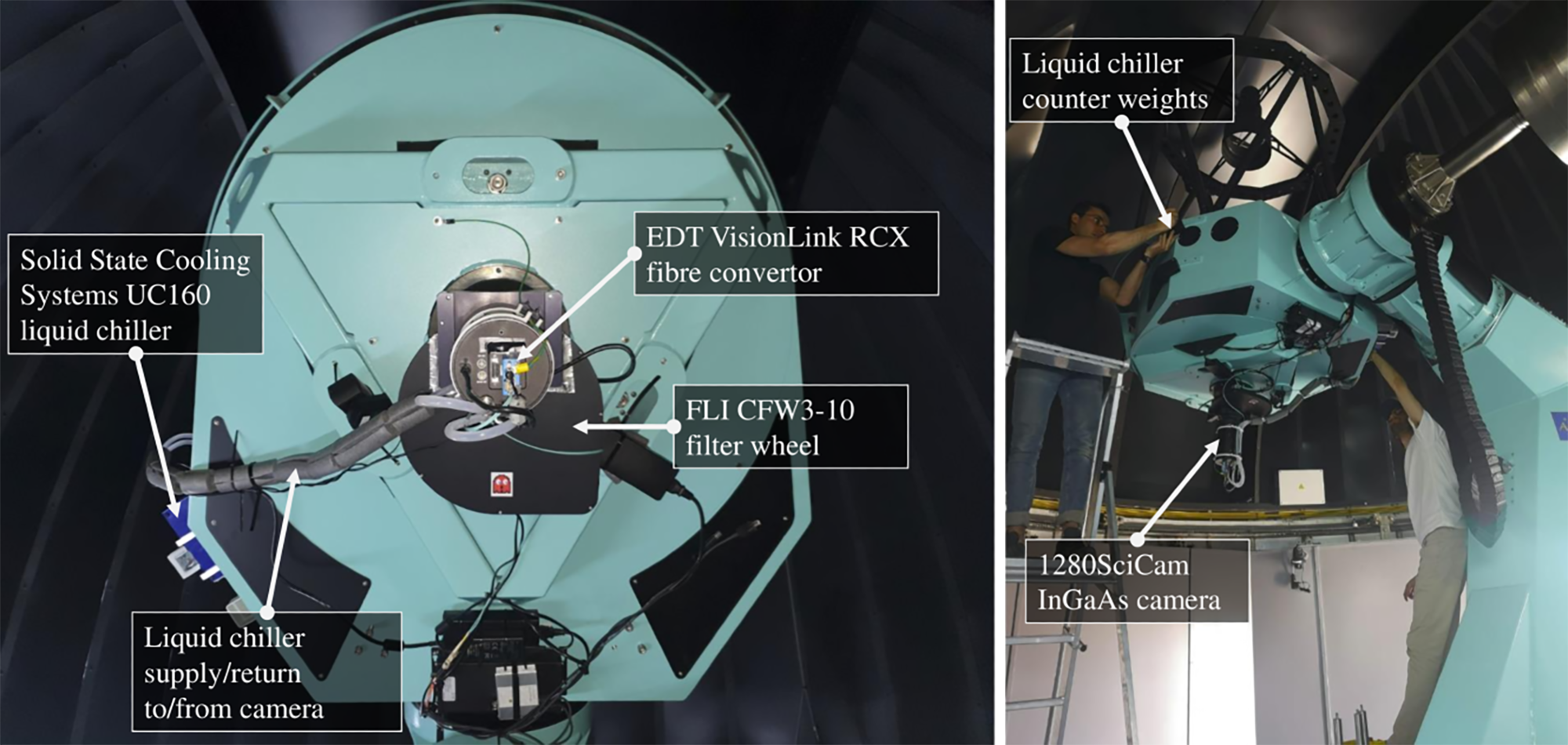SPECULOOS is a project led by the University of Liège, Belgium and carried out in partnership with the University of Cambridge, UK, the University of Birmingham, UK, the Massachusetts Institute of Technology, US, the University of Bern, Switzerland, the Canary Islands Institute of Astrophysics, Spain, and the European Southern Observatory. Its stated mission is to detect terrestrial exoplanets around nearby ultracool stars and brown dwarfs. It aims to uncover the most suitable terrestrial planets for detailed atmospheric characterization — including the potential detection of biosignatures indicating the presence of life, either past or present.
 Diagram of the SPIRIT instrument. Image Credit: SPECULOOS
Diagram of the SPIRIT instrument. Image Credit: SPECULOOS
As part of this mission, SPECULOOS recently developed SPIRIT, a ground-based near-infrared InGaAs CMOS-based instrument. SPIRIT was specifically designed to optimize time-series photometric precision for observing late M and L type stars. On-sky testing at the SPECULOOS-Southern Observatory (SSO) in Chile demonstrated SPIRIT’s excellent photometric performance. SPIRIT was fully integrated at SSO in early 2022, where it replaced the Si CCD-based instrument on Callisto, one of the four 1 m class telescopes at SSO.
Components used to build the SPIRIT imaging system were selected with great care. SPECULOOS choose the 1280SciCam InGaAs SWIR camera from Princeton Infrared Technologies. Equipped with a custom wide-pass filter, the camera optimized the photometric precision of observing ultra-cool dwarfs, while also minimizing the unwanted effects of atmospheric precipitable water vapor. SPIRIT captures 1280×1024 14-bit images. Its frame time is user-settable and defined as the time from the start of an exposure to frame read.
Communication between with the 1280SciCam and the host PC was performed via the Camera Link protocol with a Bitflow Axion 1xE frame grabber. Featuring a highly deterministic, low latency trigger, the Axion 1xE benefits from BitFlow's patented StreamSync™ acquisition engine optimized for synchronization between acquisition and DMA. In addition, BitFlow's FlowThru technology means no on-board memory is needed.
Because of the long distance between the 1280SciCam and the PC, an EDT VisionLink RCX Camera Link-to-fiber extender was attached between the BitFlow Axion 1xE frame grabber and the camera to achieve connectivity over fiber instead of electrical cabling. Camera Link digital image data is converted to fiberoptic signals, providing up to 300 meters using standard transceivers, and up to 10 kilometers with long-range transceivers.
As detector technologies continue to improve, SPECULOOS anticipates that InGaAs-based instrumentation will become increasingly adopted for high-precision near-infrared time-series observations from the ground.